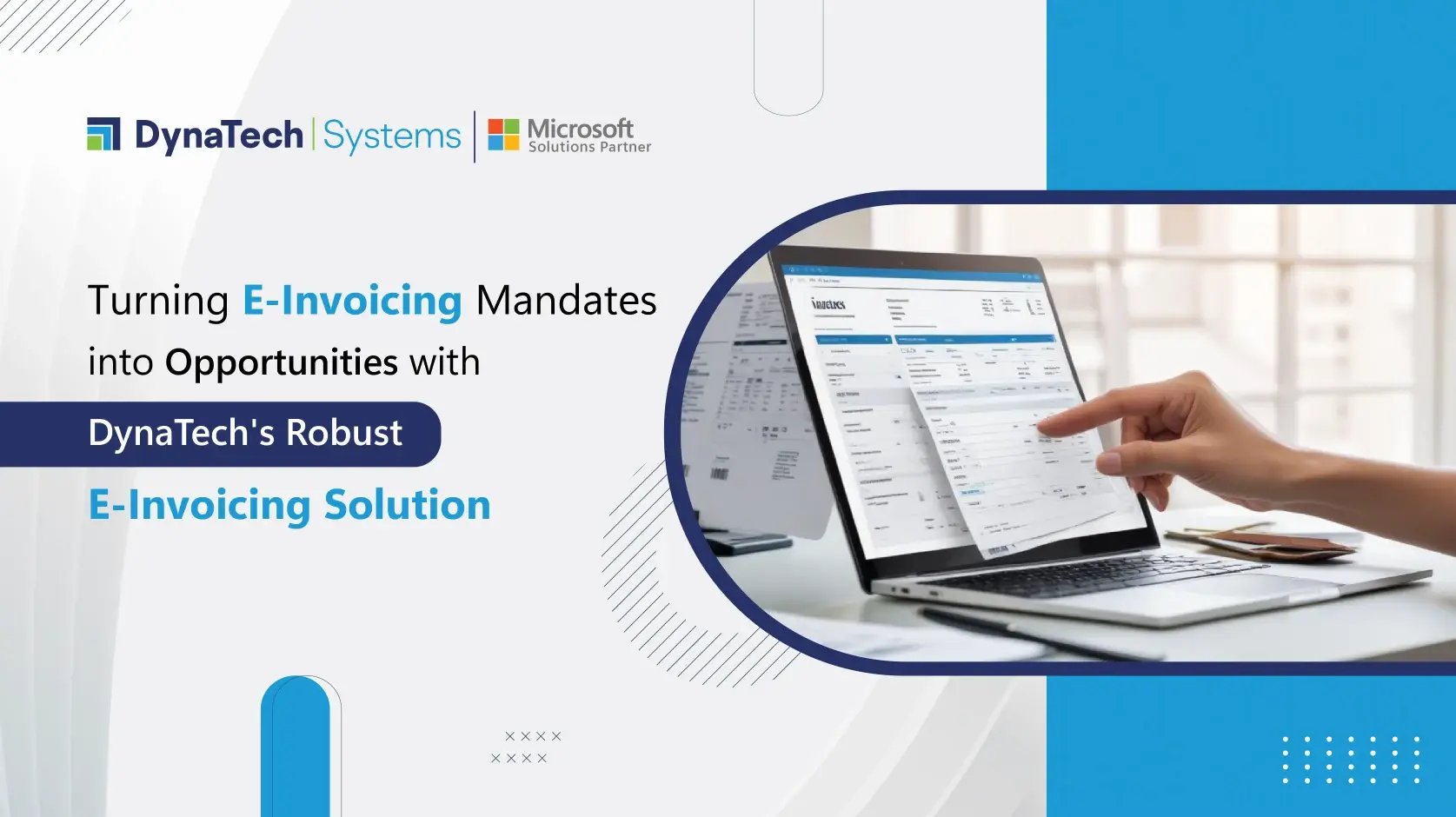Introduction
Global businesses headquartered in the US are constantly under the pressure of preparing accurate e-invoicing. Tax authorities all around the world are making e-invoicing compulsory. This is done to minimize fraud and improve transparency.
While the United States has yet to introduce a federal mandate for e-invoicing, global enterprises headquartered in the US are already feeling the pressure. Tax authorities worldwide are making e-invoicing mandatory to reduce fraud, increase transparency, and streamline tax reporting. Gartner predicts that by 2026, over 70% of global businesses will be subject to continuous transaction controls (CTCs). This simply means that invoices must pass through government platforms before they are considered valid.
For US companies operating in markets like Europe, Asia, and Latin America, this creates a complex compliance landscape. Take these examples:
|
Country |
Government Platform |
Requirement Highlights |
|
India |
Invoice Registration Portal (IRP) |
Real-time IRN + QR code generation, e-way bills |
|
Romania |
RO e-Factura (via MAROSA) |
Mandatory AR invoice reporting, XML templates |
|
Mexico |
SAT CFDI system |
Digital signatures and UUID validation |
|
Italy |
SDI platform |
Clearance model with structured XML format |
Each of these countries requires integration with government systems and also with ERP platforms like Microsoft Dynamics 365, SAP, or Oracle.
The risk? If there isn’t a proper e-invoicing integration, US companies are definitely going to face invoice rejections, penalties, and delayed payments across their global subsidiaries.
With DynaTech’s e-invoicing solution, US businesses gain exactly what they need: a future-proof e-invoicing rollout strategy. It can integrate multiple jurisdictions into one seamless ERP automation framework.
The Roadblocks in E-Invoicing Rollouts
For US companies that have subsidiaries and operations in other countries, getting a smooth e-invoicing rollout is a very easy process. But this is often overflooded with a lot of ERP integration challenges. Let’s have a look at the most common ones:
1. Multi-ERP, Multi-Country Complexities
Many organizations don’t use a single ERP. They use multiple ERPs for multiple regions or locations. For instance, they use Microsoft Dynamics 365 for one region and SAP or Oracle for another. In such cases, e-invoicing integration can be extremely challenging. This is because each of their ERP must compulsorily align with different government e-invoicing platforms.
2. Constantly Changing Compliance Rules
We all know that tax laws are never static. Government frequently updates their formats, clearance procedures, and submission windows. In the absence of adaptive ERP compliance solutions, businesses are forced into a reactive mode. This simply means patching systems after each and every, small to big regulatory change.
3. Exception Handling in Workflows
Not every invoice sails through on the first attempt. Your company might have invalid tax IDs, missing QR codes, duplicate submissions, error-filled documents, and what not. Without automated exception handling in e-invoicing workflows, the errors will surely lead to blocked payments and compliance risks.
4. Middleware Gaps
Enterprises often try to bridge ERP and government systems in their own way or some connectors. But these are fragile and can break whenever APIs change. Without robust middleware solutions for e-invoicing compliance, rollouts become unsustainable.
|
Challenge |
Impact on US Enterprises |
Why It Matters |
|
Multi-ERP Systems |
Duplicate integration efforts |
Slower global rollouts |
|
Compliance Changes |
Frequent re-coding |
Risk of penalties |
|
Exceptions |
Manual fixes |
Delayed payments |
|
High Costs |
Duplicated resources |
Reduced ROI |
|
Weak Middleware |
Breakdowns in integration |
Compliance gaps |
DynaTech’s Robust E-Invoicing Solution: Integration Done Right
When it comes to global compliance, you should not depend on any kind of temporary patchwork thing. Enterprises need a scalable approach. They need something that can unify multiple ERP systems. They require a solution that adapts to regulatory changes and can also deliver end-to-end automation. That’s exactly what DynaTech’s e-invoicing integration framework is built for.
1. Unified ERP Automation for Compliance
Why need separate tools for each geography? DynaTech renders a top-notch ERP automation for e-invoicing compliance reporting within Dynamics 365 Finance and Operations. What you get? Let’s have a look at it”
- Auto-generation of invoices in government-approved formats (XML, JSON, UBL).
- Direct submission to national portals. For instance, India’s GSTN IRP, Romania’s RO e-Factura, Malaysia’s LHDN MyInvois, etc.
- Real-time clearance updates stored directly in ERP dashboards. It is complete with IRNs, QR codes, and UUIDs.
2. Cross-Border Integration Made Simple
Don’t rely on separate compliance modules per country. DynaTech’s cross-border e-invoicing compliance integration is completely centralized and:
- Supports Accounts Receivable (AR) and Accounts Payable (AP) transactions.
- Handles multiple tax regimes. This includes VAT, GST, localized invoicing rules, — while also ensuring visibility across suppliers with Supply Chain Management.
- Consolidates reporting for global finance teams. This reduces duplication.
3. Future-Proof Middleware
At the core is our middleware solution for e-invoicing compliance, which ensures ERP-to-government communication remains stable even as APIs, formats, or rules evolve.
- Dynamic data mapping easily adapts to format changes.
- Webhook-based notifications render real-time status updates.
- Retry mechanisms automatically resubmit any kind of failed invoices.
- Secure APIs gives the surety of data integrity and audit readiness.
4. Smarter Exception Handling
Errors do happen. But who says downtime is? DynaTech’s solution uses top-notch exception handling in e-invoicing workflows: It:
- Instantly logs and flags any kind of invoice errors.
- Suggests corrective actions for invalid GSTIN or any type of duplicate IRN, mismatched values, and so on.
- Enables automated retries. This is done within defined SLA windows.
- Maintains a full audit trail. This is being done for future compliance reviews.
Exception Handling & Middleware
E-invoicing integration may seem simple and easy on paper. But when it comes to real-world processes and operations, you exactly get to know all the issues and problems.
This is why exception handling in e-invoicing workflows and resilient middleware solutions for e-invoicing compliance is a must have for your organization.
1. Why Exception Handling Matters
Old systems relied on manual corrections whenever an error occurs. But when there are invoices in large volumes, there are high chances of delays, disputes, and even compliance penalties.
Common Exceptions in E-Invoicing:
- Invalid GSTIN, VAT ID, or taxpayer code.
- IRN/UUID duplication while submitting it.
- Missing or even wrong QR code generation.
- Late submission that surpasses government deadlines.
- Failure of API communication.
2. DynaTech’s Exception-First Approach
DynaTech’s solution embeds exception workflows into the ERP environment. This helps to detect, flag, and resolve issues automatically.
- Automated Retries – When the submissions are failed, they are automatically re-attempted within a particular interval of time.
- Root-Cause Insights – Error logs identify the reason of a failed invoice. (e.g., invalid format, missing data, government API downtime).
- Smart Routing – Any type of exceptions is routed directly to the right teams (tax, finance, or IT).
- Audit Trail Maintenance – Every retry, every failure, and every resolution is recorded for proper compliance audits.
3. Middleware
Dynatech doesn’t depend on point-to-point connectors. It uses a cutting-edge middleware layer. This layer acts as the center point between ERP and government e-invoicing platforms. Here are some of the important features:
- Dynamic Data Mapping – It can automatically adapt invoice data to changing country-specific formats (XML, JSON, UBL).
- Webhook-Based Notifications – Renders real-time updates on invoice status. This includes the status like accepted, rejected, and pending.
- Secure API Gateways – Safeguards sensitive financial data during transmission.
- Batch & Real-Time Support – Manages high-volume submissions without any downtime issues.
4. Business Impact for US Enterprises
Here’s what global US enterprises gain:
- Up to 60% fewer rejected invoices. This is possible because of proactive exception handling.
- Reduced ERP e-invoicing compliance costs
- Seamless sync between headquarters in the US and international subsidiaries.

Compliance at Scale
For US-headquartered business firms, e-invoicing isn’t just a regional IT project. Today, 100+ countries are either making it compulsory or planning to make e-invoicing rollouts compulsory by 2030. Hence, business firms must be ready to embrace the future. To see how enterprises are already adapting to these global mandates, check out our blog on enterprise e-invoicing compliance.
The Scalability Dilemma
Global finance leaders often face two extremes:
- Over-Engineering
- Under-Preparing
The result? Higher ERP maintenance costs, audit risks, and delayed cross-border cash flows.
DynaTech’s Compliance-First Framework
DynaTech addresses all such kinds of dilemmas by developing ERP compliance solutions directly into Microsoft Dynamics 365. It is also supported by our global e-invoicing integration accelerators.
Key features for scaling compliance include:
- Single Control Tower for Global Rollouts
- Pre-Built Country Adapters
- Cross-Border Compliance Integration
- Cost Optimization via Automation
Reducing Compliance Costs at Scale
DynaTech helps enterprises in reducing ERP e-invoicing compliance costs through:
- Automated reconciliation and error resolution.
- Elimination of redundant third-party country-specific vendors.
- Scalable batch processing for high-volume AR & AP transactions.
- Built-in audit readiness (every step logged within D365).
In A Nutshell
The regulatory tide isn’t slowing down anytime. By 2030, nearly every major economy is expected to adopt some form of mandatory e-invoicing. The enterprises that don’t wake up and wait will face issues like rising costs, higher risks, and rushed, fragmented rollouts. It isn’t too late even now.
Those who act now—with ERP compliance solutions that scale globally—will definitely enjoy faster settlements. Not only this, but your organization can also lower audit risks and have seamless finance operations.
Is your organization ready to navigate the next wave of e-invoicing rollouts across global markets?
Connect with us as a trusted Microsoft Solution Partner Today! They have in-depth expertise and will travel the extra mile to understand your requirements and render the best solution for you.




























